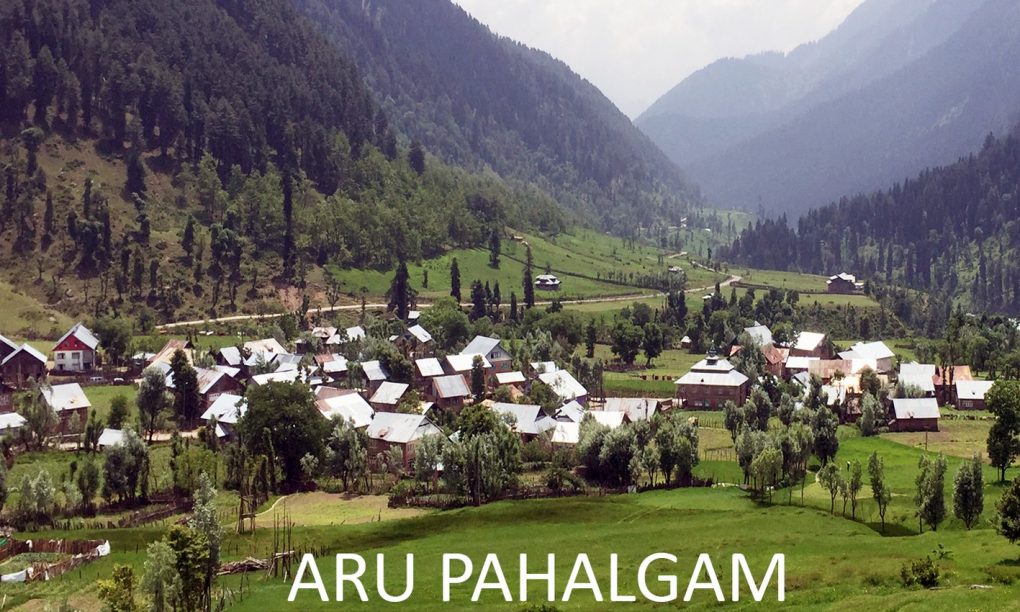Pahalgam, Jammu and Kashmir
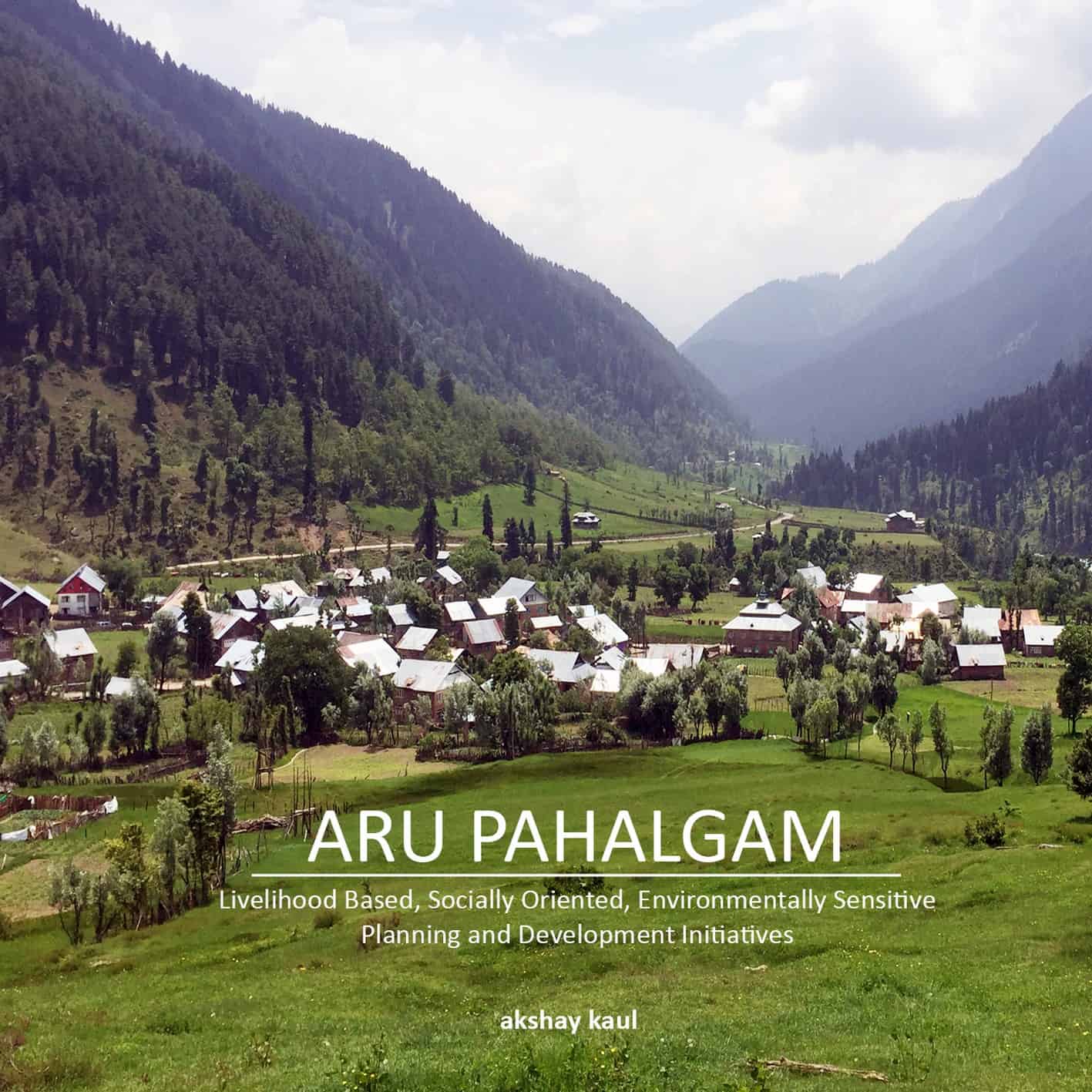
Aru valley is at an altitude of 2400 metres above mean sea level, little higher than Shimla. It is part of the larger Lidder valley (also spelt as Liddar). The Lidder valley gradually rises in elevation from south from 1600 metres to 5200 metres in the north.
The Lidder basin is surrounded on the south and southeast by the Pir Panjal Range, on the north by the Sind Valley and on the northeast by the Zaskar Range. The Liddar valley is surrounded on three sides by high mountains, the Saribal – Katsal ridge (4800 metres) on the east, the Wokhbal (4200 metres) on the west and Basmai Kazimpathlin. It is about 50 km long and has a maximum width of 5 km. The Lidder drainage basin has an area of 1134 km2 and its discharge is about 10% of the total volume in river Jhelum.
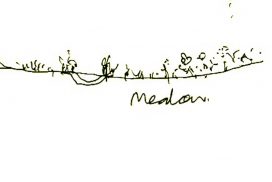
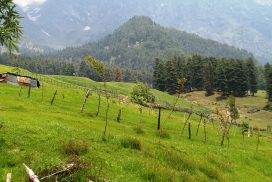

The Lidder valley begins from the base of the two-main glaciers, the Kolahoi and the Shishram which are now shrinking at a rapid pace. This is the origin of two main streams, the West and the East Lidder which merges into one before Pahalgam. After passing through Pahalgam, the Lidder passes through a narrow valley and ultimately fans out on to the wide alluvial fan near Aishmaqam. The Lidder meanders and forms a braided stream in the southern plains of the valley.
Aru valley has a Sub-Humid Temperate with nearly 80 per cent of its annual rainfall concentrated in winter and spring months. Aru receives about 1200mm of precipitation spread over the year and almost evenly distributed except in the months of September, October and November where it is minimum. The temperatures in winter drop down to -13 degree and 25 degree in summer.
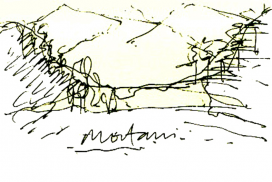

The vegetation of the region displays characteristic mixture of temperate flora with This zone extends up to the altitude of 2200 metres with Pinus species, and Cedrus deodara grow along with broad-leaved species like Acer caesium, Juglans regia, Salix species, Populus sp and Robina pseudoacacia. Indigofera heterantha, Randia tetrasperma, Viburnum grandiflorum, Berberis lyceum, Parratiopsis jacquemontiana, Daphne mucronate, Verbascum Thapsus, Ajuga bracteosa, iola odorata, Hypericum perforatum, Verbascum thapsus are found as shrubs in open landscape in the region. The evergreens may either appear as pure colonies or mixed species. In Aru, predominantly these appear as broad leaf along the eat and west river and Salix along smaller streams.
Any Geological setting has three components primarily the lithology, stratigraphy and structure. Essentially, the geomorphology of any area is created by the interplay of these three components. While structure also reflects tectonics, lithology and stratigraphy are obviously intimately related to each other. Aru much like Pahalgam is a V shaped valley at the base of a U shaped valley. The lithological formations of the study regionrange from Carboniferous to Triassic with recent formations near the rivers and the glaciers of the Liddar valley. Much of the spectacular character of the present topography of the northern part of the Lidder Valley has resulted from the glaciations in the remote past. Glaciers carry many types of fragments and particles embedded in them. Those particles placed along the base of a glacier may scratch, grind or groove the rock surface during the movement of ice. Such fine cut lines and scratches become exposed when the glacier disappears. During the advance movement of glacier ‘straited erratic’ may be seen in Aru as evidences for the glacial movement.
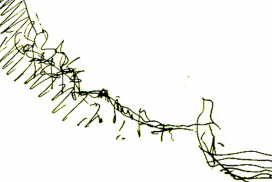
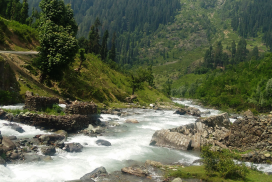
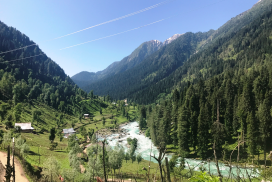
Fluvial geomorphological landforms are produced by fluvial process. The long stretch of the West Lidder from the source at Kolahoi Glacier to its merger with the East Lidder at Nunwun is constituted a fluvio-glacial landscape. The fluvial landforms present in the study area are mainly gorges and terraces. The gorge at Kalwan known as Kalwan gorge carved through the thick formations of volcanics, limestones and calcareous sandstones is about 3-4 Km long, 100- 150mts deepp. This gorge is the fluvial erosion feature. Another fluvial feature is the terrace. The study area is mostly characterized by the depositional terraces. The terraces are found between Mundlun and Aru along the West Lidder and are also found at Nunwun. The terraces found in the study area and in the surroundings are mostly un- paired (Kaul. M. N., 1994). In addition to above morphological landforms present in the study area there are also presence of mass-wasting (land sliding) between Nunwun to Aru along Pahalgam-Aru road. The sliding material commonly found is the mixture of boulders, gravels, clay and silt overlying on the inclined limestone beds.
The V shaped Aru valley is bound on the both sides from the streams of glaciers melt that come down from Kolahoi glaciers in the North as the West Lidder river.

